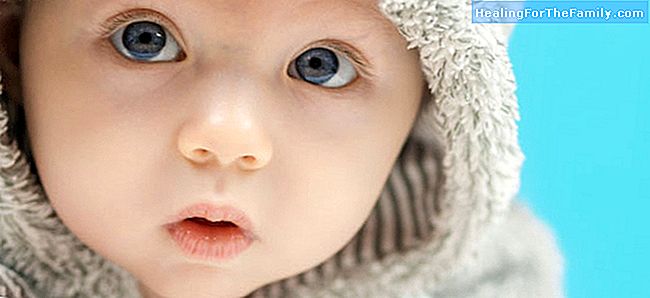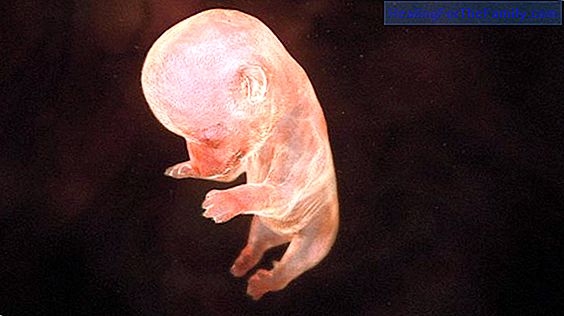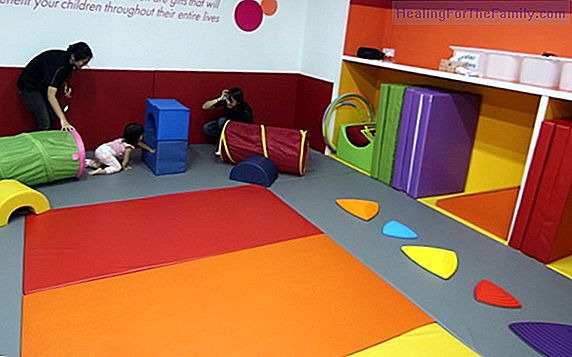5 Curiosities about the eyes of babies
The newborn baby is not able to perceive colors, objects or even see his parents with total clarity. The vision goes through several phases until it acquires 100% of its capacity. In fact, it is the least developed sense at birth. Their visual acuity is limited, also the colors they perceive or the
The newborn baby is not able to perceive colors, objects or even see his parents with total clarity. The vision goes through several phases until it acquires 100% of its capacity. In fact, it is the least developed sense at birth.
Their visual acuity is limited, also the colors they perceive or the ability to focus. These are some curiosities about babies' eyes.5 things you did not know about babies' eyes
1. Babies can not see from afar.

Newborn babies have only 5% of the adult's vision capacity, therefore, everything that is more than 30 centimeters away is blurred. Curiously, it is usually the distance between the baby's eyes and those of the mother during breastfeeding. Likewise, they can not focus at the same point with both eyes at the same time until 4-5 months. Therefore, you should not be surprised if you ever see your baby squinting. After 6 months, they begin to focus with both eyes and you can take it to your first eye exam. This will help you understand how your vision is evolving and to detect any visual problems that may begin to be corrected. Some signs of vision problems may be: moving your eyes from one side to the other when you are tired, tilting your head so you can see objects or put them close to your eyes.
2. Babies do not see in gray or black and white.
Babies are able to see colors but do not identify them correctly. For years it has been believed that babies looked in shades of gray, but recent studies reveal that they can identify contrasting colors such as, for example, black and white. As the months go by, they begin to focus more on the view and they expand the range of colors they are able to differentiate. Between the month and the two months, they must already be able to distinguish primary colors like red or yellow and, at 5-6 months, they will begin to differentiate the different ranges of a certain color.
3. Babies do not recognize us until they are 7 months old.
With 7-8 months the baby's vision is already clear enough to recognize people further than by their smell or voice. At this stage your baby will begin to show interest in objects, even if they are small, as well as by images or drawings. You will also begin to move your eyes more agilely, without having to move your head, and you are more aware of the different parts of your body. It is not surprising that they observe their feet and hands closely.
4. Up to 10 months your eyes will not acquire their final color.
Melanin is the pigment that determines the color of your eyes, skin and hair. When we are born, melanin levels tend to be lower, therefore, many babies at birth have a clear eye color. Normally, the biggest change in color occurs between 6 and 9 months, with the eyes darkening. This change is usually so gradual that, sometimes, hardly notice any differences. Between 10 and 12 months of age, most children already have their final eye color. But, some experts indicate that the eye color can continue to vary, even up to 6 years. This, however, is not very frequent. It is advisable to consult your pediatrician if you see that your baby has one eye of each color, such as blue and brown. This may be related to rare genetic conditions such as Waardenburg syndrome.
5. Children up to 12 years of age do not acquire full vision.
Although our vision does not stop evolving, the view of the baby begins to be as clear as that of an adult with one year, being able to identify objects and people at a considerable distance. In addition to being able to keep your eyes fixed on an object for longer, you will also recognize your favorite characters or drawings without difficulty. At this stage it is especially important to watch for signs of a possible eye problem such as lacrimation, asymmetries or nervous movement of the eyes. If any of these symptoms are detected, or if you have a medical history of visual problems at home, it is recommended to visit the optician on a regular basis to examine your baby's vision.
Brendan O'Brien












